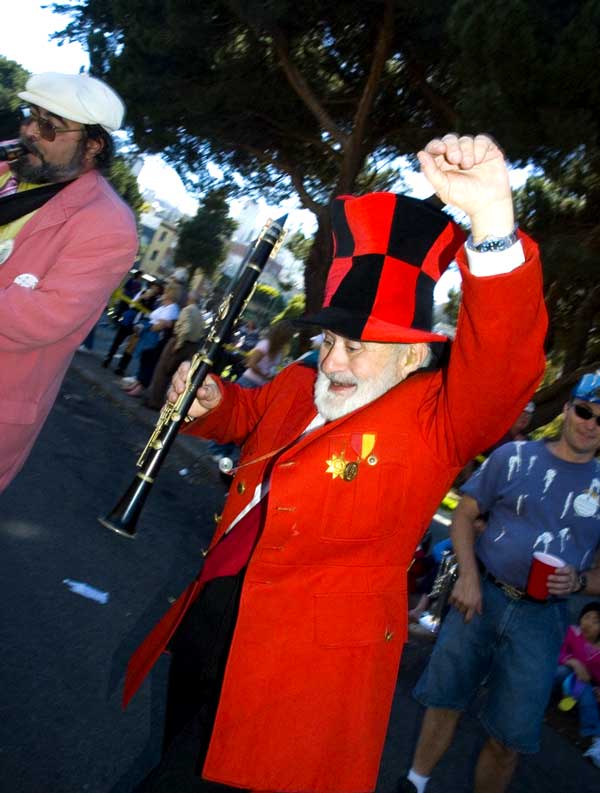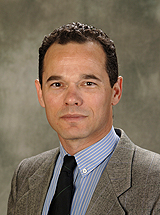Paul DeCarli
Nick Pinter claims here that diamonds were misidentified in earlier YDB studies. The paper this month was Paul DeCarli’s first formal appearance with the YDB team but his presence as a co-author undermines Pinter’s accusation. DeCarli is a diamond pro. And more importantly he is an eager scientist more given to discovery than criticism. I have seen the old fellow out at San Fran AGU sitting up front like a grad student, eager to move science forward –again.
Maybe Pinter thinks DeCarli just got lucky with Gene Shoemaker back in the 50’s with all that “shocked quartz” stuff?
Nick Pinter
UPDATE: A friend noted for me that Pinter…excuse me, DeCarli….holds the 1966 patent (my birth year) for the first synthetic manufacture of hex-diamonds — the same diamond type identified by DeCarli and his co-authors at Lake Cuitzeo. I suppose Mr. Pinter would contend the baker does not know his bread?
DeCarli patent posted below the break.
Paul S. DeCarli is a Senior Scientist Emeritus at SRI International and an Honorary Research Fellow in Earth Sciences at the University College London. He writes: “I was drafted to give a talk at the Sept. meeting of the American Society for Materials. After going to the work of preparing that talk, I’d be happy to give it again to the PGS. I’d modify the talk slightly, with more emphasis on high-pressure mineralogy and less emphasis on metallurgy. One of our PGS regulars, Bob Wallace, was at the ASM meeting and thought the talk would be appropriate for the PGS.”
Paul was born in Stockton in 1930, started Stanford in 1948, and after a stint in the Army from ’52-’54 and started at Stanford Research Institute (now SRI International) as a helper and explosives technician, and finished up at Stanford with a B.S. in metallurgy in 1957. As low man on the totem pole, Paul was assigned to help scientists who visited during the summer to conduct research or simply to learn about shock waves and consult in their specialties. Visitors included Fred Seitz, James Koehler, Morris Nicholson, Andrew Lawson, John Jamieson, and Joe Boyd. When John Jamieson suggested that it might be fun to see whether they could make coesite by shocking quartz, DeCarli designed an experiment to shock and recover quartz. When DeCarli’s post-shock examination showed the recovered sample to be amorphous, he and Jamieson wrote the first paper on shock metamorphism of quartz. A single line in that paper notes that feldspar also became amorphous in a shock experiment.
The paper attracted the attention of Gene Shoemaker, whose office at the Menlo Park office of the USGS was about 100 m from Paul’s office. Paul gave samples to Gene. Gene later gave a sample from the very first experiment to Sue Kieffer who went on to study shock metamorphism in Meteor Crater. Dan Milton, one of Gene’s co-workers, subsequently suggested trying to duplicate the structure of Shergotty.
Another paper. Dan also taught DeCarli the techniques of purifying coesite and stishovite in shocked quartz. Another paper. Interestingly, the original sample of the 1959 paper contained stishovite. Concurrently, after the quartz paper, DeCarli was trying to understand shock amorphization. He consulted Maurice Huggins, a well-known crystallographer who was working at SRI. Huggins suggested that he look up metamict minerals. Of course! Tectosilicates are subject to radiation amorphization. Another material subject to radiation damage is graphite… the Windscale incident, a reactor excursion ascribed to radiation damage in graphite was in the news.
Shortly after the quartz experiment, an experiment with graphite was performed in 1959. The result: a material that abraded an agate mortar, scratched polished sapphire and gave a diffraction pattern that included weak and diffuse lines identical with diamond. Since theoretical studies had recently shown that it was not possible to shock-synthesize diamond, DeCarli’s superiors were suspicious. Samples were sent to outside scientists who failed to detect diamond. Jamieson was the only scientist who agreed that diamond was present in the samples. Finally, after additional experiments and Jamieson’s willingness to co-author, DeCarli was allowed to publish. Subsequently, Kathleen Lonsdale and Judith Milledge agreed that diamonds were present in DeCarli’s samples. Erik Lundblad of ASEA also performed a shock experiment that confirmed DeCarli’s results and he taught Paul the selective oxidation technique for purification of diamond.
During the early 60s, DeCarli and Ahrens were funded by NASA to work on shock effects in rocks and minerals. Ahrens took the contact with him when he joined CalTech, and DeCarli had to find other sources of support. Funding was becoming tighter and research contracts were much more narrowly constrained. Defense funding appeared the most reliable, so DeCarli moved into the development of shock wave instrumentation. His colleagues had previously developed techniques for using manganin piezoresistant stress gages for measurements up to about 35 GPa. DeCarli developed techniques for extending the range of manganin, eventually calibrating it over the range to 120 GPa.
Between about 1970 and 1995, most of DeCarli’s efforts were devoted to development of shock wave instrumentation and to measurements on various defense related nuclear and high explosive experiments. Some of this work was performed in conjunction with joint Russian-US programs to monitor the yields of underground nuclear tests.
Since reaching retirement age in 1995, he has continued part-time work with SRI. His unpaid research efforts include a collaboration with Judith Milledge of University College London (UCL) to determine whether the Bangui magnetic anomaly corresponded to an asteroidal impact site and whether carbonado, a form of natural polycrystalline diamond, could be the result of shock synthesis. When one of the doctoral students at UCL, Emma Bowden, obtained a studentship to study shock wave metamorphism, Mr. DeCarli was asked to serve as her advisor, and he was appointed Honorary Research Fellow. Ms. Bowden successfully completed her research and her thesis. Mr. DeCarli has also been collaborating with Tom Sharp of ASU and with his students, teaching them enough shock wave physics to interpret shock effects in meteorites. One of DeCarli’s personal goals is to teach the essentials of shock wave physics to as many persons as possible.
In order to make calculations of the cooling history of melt veins and pockets in meteorites, DeCarli learned to use a finite element heat transfer computer code. He then taught Tom Sharp’s students to use the code. DeCarli is currently learning to use wave propagation computer codes. He is comparing the results of calculations with experimental results, and he is also collaborating with Adrian Jones and David Price of UCL in calculations of the effects of very large impacts on the Earth.
His post-retirement career has been productive, to date. The alert reader may note that there is no mention of DeCarli’s advanced degrees. He doesn’t have any. They were not needed when he started with SRI, nor did he have any money for further studies. In the 50s, US government support for higher education was virtually non-existent. By the time funding became available (the response to Sputnik), DeCarli was too involved with diamond synthesis and other problems to find time to return to school. He briefly considered obtaining a Ph.D as a retirement activity, but he has been too busy doing useful work, including tutoring MA students.



